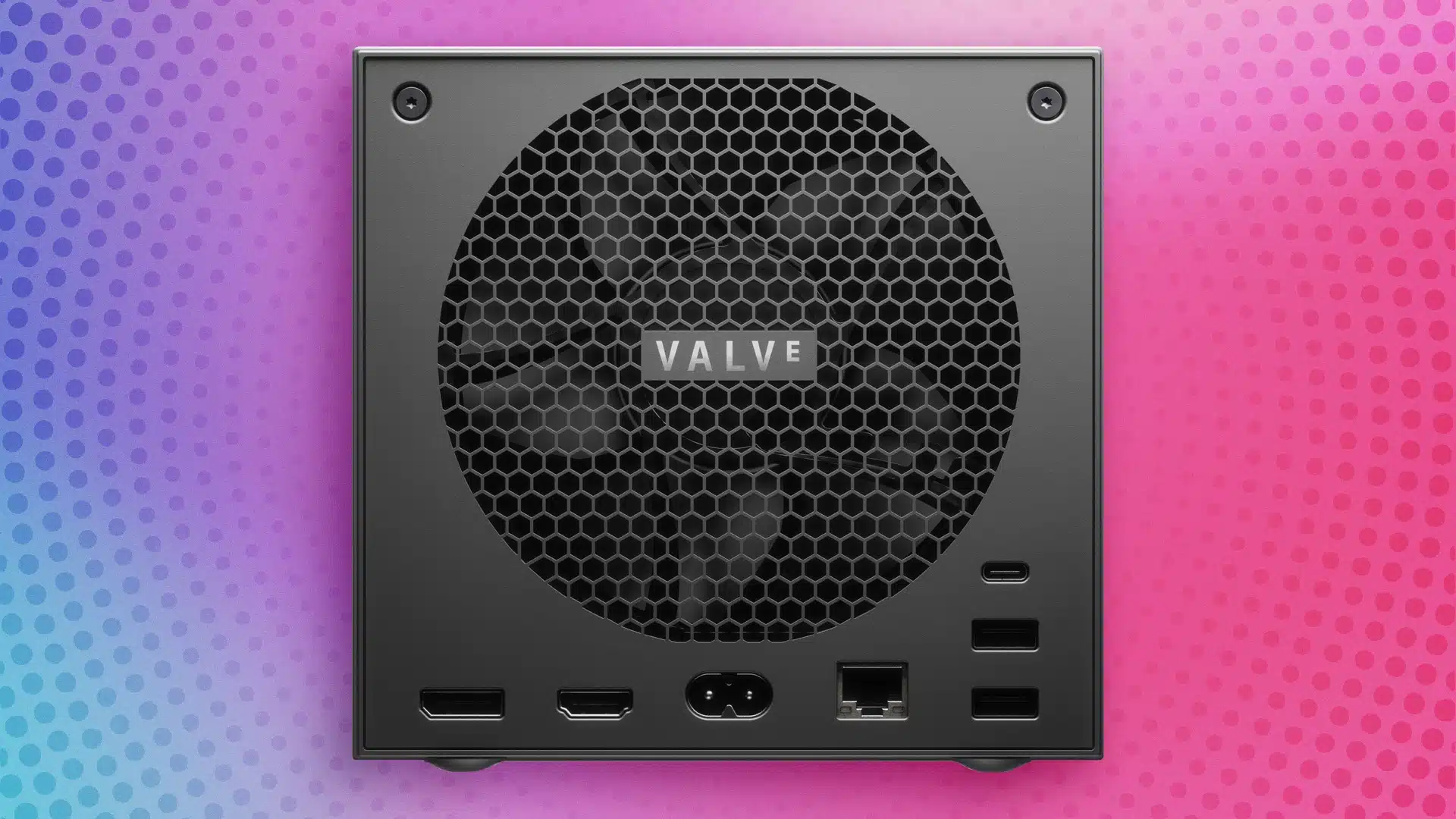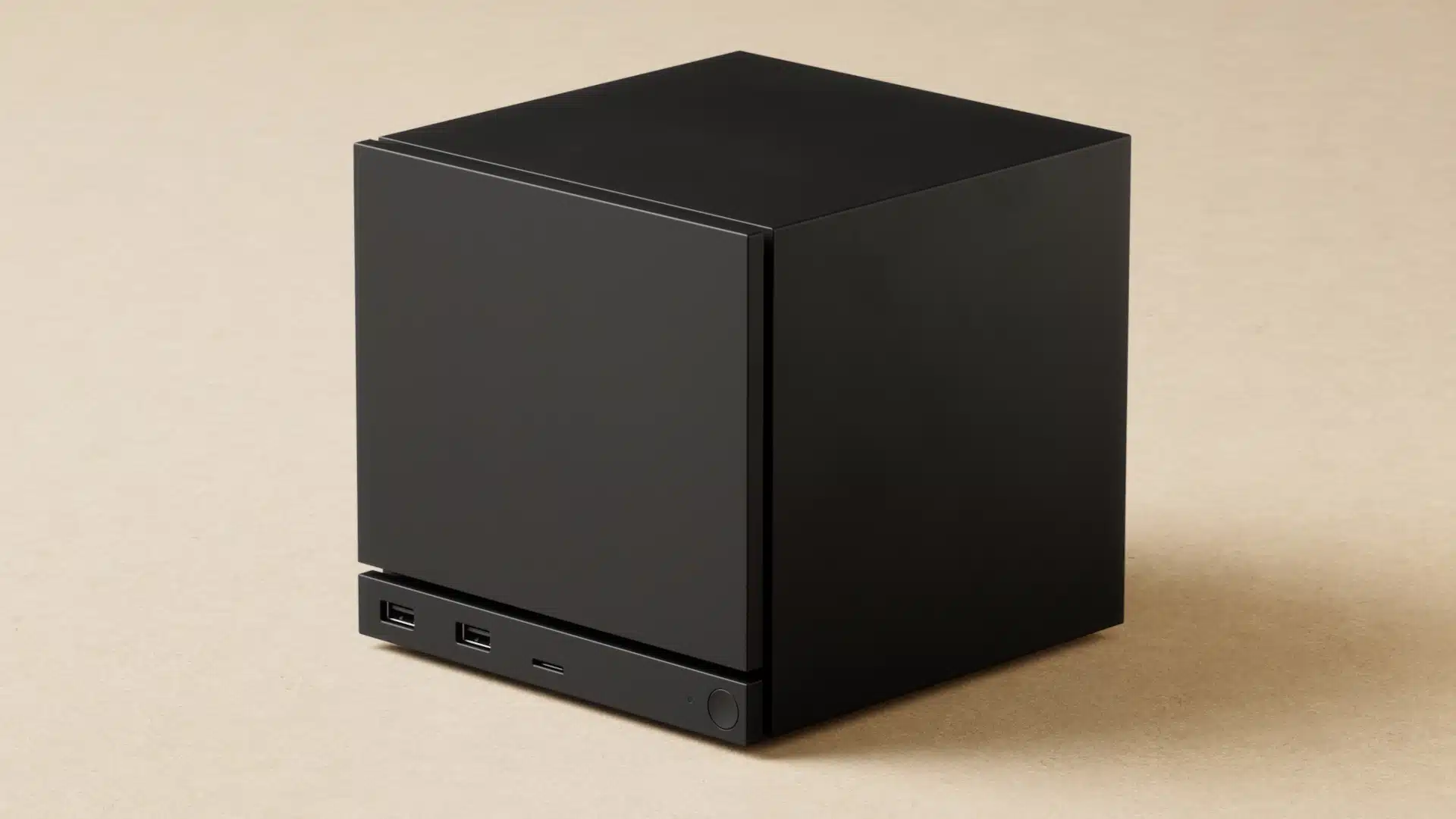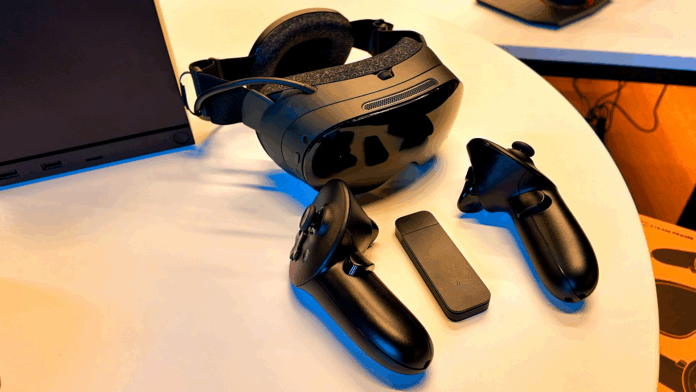The cat is out of the bag: Valve is launching its own PC for the living room. But how does the Steam Machine stack up against the PS5 Pro & Co.?
It’s nothing short of a bombshell: Valve has announced the release of a new Steam Machine. Its first attempt at this was about ten years ago – and ultimately failed.
Now comes a second attempt to dominate gaming in living rooms worldwide:
- The compact Steam Machine based on AMD hardware is scheduled for release in early 2026.
- Details on the exact date and price will follow after the New Year.
- Steam OS will be used as the operating system.
Valve is thus launching a real competitor to the PlayStation 5 and Xbox Series X, which is explicitly designed for the living room (quiet and small enough to fit under your TV
). At the same time, performance is said to be high enough for 4K gaming thanks to FSR upscaling technology.
We summarize everything you need to know about Valve’s new hardware, including an initial assessment of its performance compared to current consoles and PCs, as well as a cautious price forecast.
More news from Valve: The Steam giant has also announced a new Steam controller and the new Steam Frame VR headset. There is already a separate news item about the controller (see below), and we will take a closer look at the VR headset tomorrow.
Steam Machine vs. PlayStation 5 (Pro) and Xbox Series X
Let’s start by looking at the key technical specifications of the Steam Machine in comparison with the current consoles.
Unsurprisingly, Valve is relying on hardware from AMD, which allows for very good comparisons in terms of performance. According to Valve, the TPD of the GPU is 110 watts and that of the CPU is 30 watts.
| Steam Machine | PlayStation 5 Pro | PlayStation 5 | Xbox Series X | |
|---|---|---|---|---|
| CPU | 6C/12T (4.8 GHz) | 8C/16T (3.8 GHz) | 8C/16T (3.6 GHz) | 8C/16T (3.6 GHz) |
| CPU architecture | Zen 4 | Zen 2 | Zen 2 | Zen 2 |
| GPU | 8.8 teraflops (max. 2.45 GHz) | 16.7 teraflops (max. 2.35 GHz) | 10.3 teraflops (max. 2.23 GHz) | 12.1 teraflops (max. 1.85 GHz) |
| GPU shaders | 1,792 | 3,840 | 2,304 | 3,328 |
| GPU architecture | RDNA3 | RDNA3 + RDNA4 (ray tracing) | RDNA2 | RDNA2 |
| RAM | 8 GB GDDR6 + 16 GB DDR5 | 16 GB GDDR6 + 2 GB DDR5 | 16 GB GDDR6 | 10 GB (560 GB/s) + 6 GB (336 GB/s) GDDR6 |
| Storage | 512 GB / 2 TB | 2 TB | 825 GB | 1 TB |
| Price | Unknown | Approx. $729 | Approx. $500 | Approx. $550 |
In terms of theoretical computing power, the Steam Machine ranks just below the PlayStation 5 and Xbox Series X. Valve itself only cites the Steam Deck as a comparison, although the Steam Machine is said to be more than six times faster.
There are two important factors to consider here:
- Games can be specifically optimized for the hardware and software of consoles. In the case of the Steam Machine, however, SteamOS (= Linux) is used. This makes it necessary for developers to take many different hardware combinations into account.
- Performance under Linux is now mostly good to very good, as we recently took a closer look at. Nevertheless, consoles have an advantage when it comes to game optimization. In addition, some titles with certain anti-cheat software do not run under Linux.
- Addendum: As with the Steam Deck, it will certainly be possible to manually install Windows as the operating system on the Steam Machine.
- Taking into account the so-called
dual-issue capability
, the Steam Machine theoretically reaches a maximum of 17.6 teraflops. Put simply, thanks to improvements in the RDNA3 architecture, this technology allows shaders to perform twice the number of calculations.- AMD therefore doubles the officially specified teraflops for desktop graphics cards from RDNA3 onwards, but Sony does not do this in the case of the PS5 Pro, despite RDNA3. The reason is understandable: in practice, dual-issue technology is far from doubling performance.
The bottom line is that, based on the current status, we expect the Steam Machine to deliver performance on par with the PlayStation 5 or Xbox Series X, partly due to its significantly faster CPU (more on this in the next section).
This assessment of performance is also consistent with Valve explicitly mentioning FSR in connection with the Steam Machine’s 4K capability in order to achieve 60 FPS at this resolution. We will take a closer look at this topic on the second page of this article.
Steam Machine vs. consoles: advantages in terms of CPU
If processor performance is particularly important in a game, the Steam Machine has an advantage over consoles. This is mainly due to AMD’s significantly more up-to-date Zen 4 architecture.
In our opinion, however, the decision to forego two cores (6 instead of 8) is understandable and is unlikely to result in performance disadvantages.
Also worth considering: The Steam Machine’s processor clocks in at an impressive gigahertz higher than its Zen 2 counterpart in consoles.
On the second page of this article, we compare it with a PC, particularly with regard to gaming in 4K resolution, list all the connections, and give a forecast of the price of the Steam Machine.
Steam Machine: How much 4K is really in it?
Valve is promoting its new Steam Machine with the ability to display games in 4K at 60 FPS. Our comparison with PC hardware shows exactly what this means.

Comparison of the Steam Machine with PC hardware
- Graphics card: Looking at similarly fast PC hardware, the GPU performance of the Steam Machine is roughly on par with a Radeon RX 7600.
- Processor: When it comes to CPUs, a similar name comes into play, namely the Ryzen 5 7600X (or comparable Ryzen models with six cores).
Anyone familiar with PC components knows that the RX 7600 is many things, but certainly not a 4K graphics card. Valve’s statement that it “supports 4K gaming at 60 FPS through FSR” should therefore be viewed with great skepticism, especially in view of the modest VRAM capacity of 8.0 GB.
Basic support is available, as the Steam Machine can generally render 4K resolution at 60 FPS. However, there will be many games in which this is not feasible with Valve’s new console competitor (or only with greatly reduced details or aggressive upscaling).
On the other hand, consoles also frequently make use of upscaling.
Speaking of upscaling
…
The latest FSR version 4 for upscaling is clearly superior to its predecessor, 3.1. However, it is only officially supported by RDNA 4 hardware, which is not used in the Steam Machine.
At the same time, Sony has already announced that it will make FSR 4 available on the PlayStation 5 Pro in 2026 with the help of AMD. However, the PS5 Pro’s GPU is already based in part on RDNA 4 technology.
It is therefore conceivable that the Steam Machine will not be able to keep up in this regard.
What about images generated entirely by AI? Valve does not mention this in its announcement. However, if games natively support AMD’s Fluid Motion Frames technology, it should also be available on the Steam Machine.
Finally, it is also conceivable that Valve will introduce a Verified
program for the Steam Machine, similar to the Steam Deck, which shows the resolution, quality and FSR level, as well as the refresh rate at which titles run on it.
DisplayPort, USB & Co.
- DisplayPort 1.4 (up to 4K @ 240Hz or 8K@60Hz)
- HDMI 2.0 (up to 4K @ 120Hz)
- Ethernet 1 Gbps
- USB-C 10 Gbps, 3.2 Gen 2
- 4x USB-A type
- 2x USB 3 on the front
- 2x USB 2 on the back
- 2×2 Wi-Fi 6E, dedicated Bluetooth antenna
- Integrated 2.4GHz connection for the Steam Controller
Further questions and the possible price
Aside from the question of exactly how fast the Steam Machine will ultimately be, we will have to wait patiently for answers to many other questions.
In addition to the release date and price, which are to be announced in early 2026, these include factors such as the noise level and temperature development of the Steam Machine under load, and the question of whether manufacturers other than Valve will also be able to release their own Steam Machines at some point.

How much will the Steam Machine cost?
It’s impossible to say for sure. However, based on the hardware used and Valve’s capabilities, we expect the cost to be around $600. Both less (especially for the 512 GB model) and more are entirely conceivable.
The current memory crisis also hangs like a sword of Damocles over the price. RAM has already become significantly more expensive as a result, and other components are likely to follow suit (or have already done so).
Since the Steam Machine has been in development for some time and the relevant contracts have long since been negotiated, this may not be a factor by the time it is released. However, subsequent price increases cannot be ruled out.

One thing is already certain from our point of view:
PlayStation and Xbox have probably never faced such strong new competition.
At the same time, it remains to be seen whether Valve will be able to reach its target audiences as successfully as it hopes.
If you have any questions for Valve about the Steam Machine, feel free to ask them in the comments. We’ll compile a list and try to get as many answers from Valve as possible.


